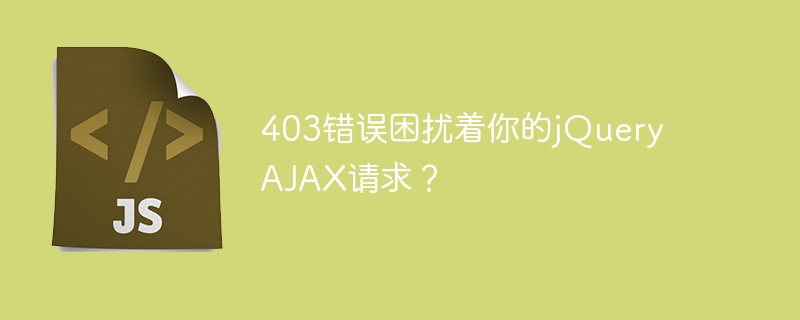

403 errors plaguing your jQuery AJAX requests? This issue may cause confusion and headache for many developers. A 403 error means that the server rejected your request, usually due to permission issues. When dealing with this kind of error, we need to carefully examine the code and find out the problem. Below I will provide you with some specific code examples to solve this problem.
First, let's look at a simple jQuery AJAX request example:
$.ajax({
url: 'https://api.example.com/data',
type: 'GET',
success: function(response) {
console.log(response);
},
error: function(xhr, status, error) {
console.log(xhr.status);
}
});In the above code, we send a to "https://api.example.com/data" GET request, if the server returns a 403 error, we will print out the error status code in the console. Next we will discuss some common causes that may cause 403 errors and provide corresponding solutions.
$.ajax({
url: 'https://api.example.com/data',
type: 'GET',
headers: {
'Authorization': 'Bearer <token>'
},
success: function(response) {
console.log(response);
},
error: function(xhr, status, error) {
console.log(xhr.status);
}
});In general, handling 403 errors requires you to carefully examine all aspects of the request, including request headers, authentication, cross-domain settings, etc. Hopefully the above examples and solutions can help you resolve 403 error issues in jQuery AJAX requests. 【Word count 800】
The above is the detailed content of jQuery AJAX request blocked?. For more information, please follow other related articles on the PHP Chinese website!